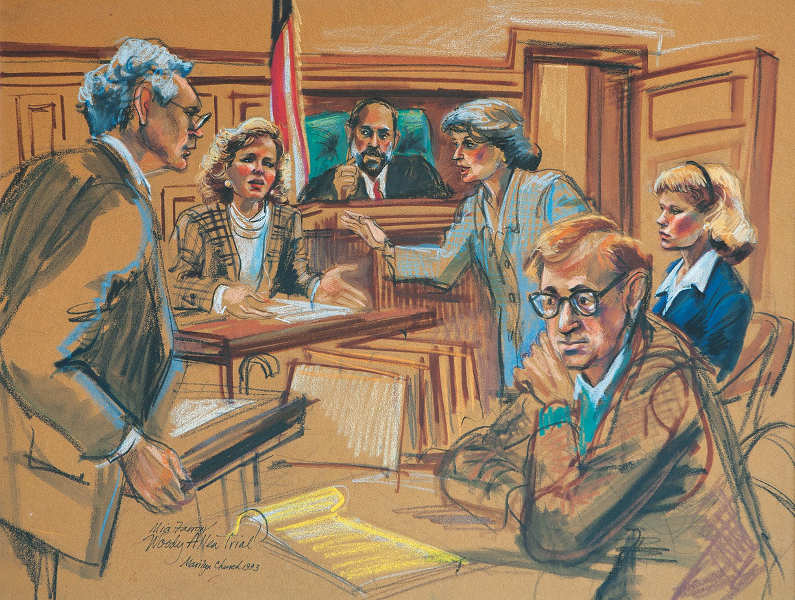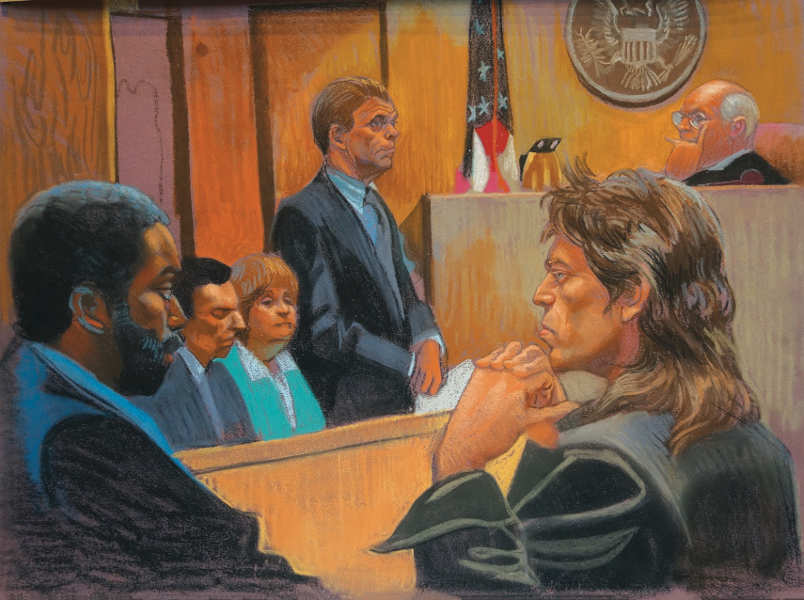Is Courtroom Art Only a Sketch of a Moment in Time or Something More?
You've all heard of the tiger beetle, right? No? Ok, here's the story. The tiger beetle is the Usain Bolt of the insect world - except it is around 24 times faster than Usain Bolt. The tiger beetle can run up to five miles per hour and can cover 120 of its body lengths in just one second. You know what that means, right? That means that Usain Bolt, the fastest human on the planet Earth, would have to sprint 480 miles per hour to match the speed of the tiger beetle - he can only cover 5 of his body lengths per second. Yet, that sort of God-given speed comes with some ironic twist - for tiger beetles, not for Usain Bolt. They run so fast that their eyes cannot gather enough light to form a stable image. When they run, they become blind - they have to stop every now and then in order to see where are they and where they are heading to.

Speed as the Essence
If you have thought we have missed the title of this feature, and that it should have been named after the tiger beetle (or Usain Bolt), well, you've been wrong. The title is correct, and we will talk about the courtroom art. We have started the article the way we did, because of the two things. For artists that are sketching events from the courtrooms, speed is probably the most important quality needed. Yes, they may have all the meticulousness and pedantry of the world, but if they are not fast enough, it is all pointless. Courtroom artists are probably among the fastest creators among all the artists, as they are able to make dozens and dozens of sketches in a matter of hours. That leads us to the second point, which could be summed up in one phrase: Haste makes waste. This, of course, should not be taken literally, as good courtroom artists are always producing images with stunning details, especially when we consider the time needed for their creation. However, most of courtroom artworks reminds us more of caricatures of people present in the courtroom, rather than of their portraits. Of course, this is totally obvious and understandable. You cannot make anything more than a sketch that highlights basic facial features in a couple of minutes - and a caricature is nothing else but exaggeration of some characteristics and oversimplification of others. So, the haste is needed, and the waste is expected.

Journalism or Art?
But, why are people even bothering to draw scenes from the courtroom, when we have all the range of technology devices that allow us to record things - from photo and video cameras, to smartphones? Well, things haven't been like that always. For centuries, courtroom sketches were the only way to depict events that happened in courtrooms. For centuries, there were much more illiterate people than literate ones, and a picture was the only way they could find out of what was going on. And some of the trials were highly popular, even back then - take the Salem Witch Trials, for instance. Even when cameras were invented, they were not adopted immediately - they were too big, too distracting, and could not capture the moment. Because of the distraction, photographers and cameras weren't allowed in many courtrooms. Judges were able to ban cameras for almost every reason, with the high profile of the case, testimonies by the minors, or sex crimes being on top of the list of reasons to ban the cameras. Yet, the courtroom artists were always allowed to be present in courtrooms. Because they are usually creating information, rather than an artwork, they are somewhere halfway between journalists and artists. Their work needs to be accurate, understandable, and available for immediate broadcasting - courtroom artworks are often used as illustrations from court, both on television and in print. Because of the nature of the trials, courtroom artists must have a strong stomach, thick nerves and a cool head - these attributes make them more journalists than artists.

Courtroom Art - Diminished, but Valuable Role
As if their work isn't stressful enough - it can be compared with working in a news agency, and you don't won't to know how stressful is that - there are some countries, like the United Kingdom, or Hong Kong, that are forbidding sketching while the trial is on. In other words, courtroom artists may be present at trials, but are allowed to sketch only when the court is adjourned. This means that artists are drawing solely from their memory - and that requires some pretty much superhuman skills. Apart from them, courtroom artists need to have a deep understanding of the courtroom proceedings in order to capture the essence of what is going on in the courtroom. Because of the nature of the work, and because of the ever-developing technology, we may say that courtroom art is a somewhat of a dying craft. Perhaps it will never fully extinguish, as courtroom artists are making graphic documents that couldn't be made in any other way. Courtroom art captures important moments from the court trials, but there's more to it: courtroom art and courtroom artists are parts of centuries long tradition, with valuable, if diminished roles. And, as such, should remain as objective witnesses of the life in the court.
Sign up for My WideWalls for FREE and be up-to-date with contemporary and street arts.
Featured image: Priscilla Coleman - Amy Winehouse, 2009.
Can We Help?
Have a question or a technical issue? Want to learn more about our services to art dealers? Let us know and you'll hear from us within the next 24 hours.
